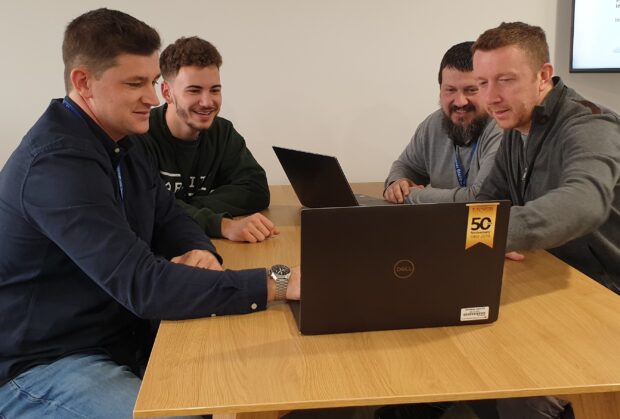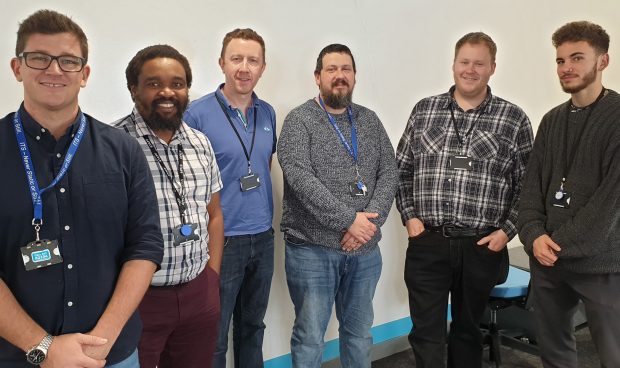The team
I lead DVLA’s Emerging Tech Lab, and I’m joined by a technical lead and three developers.
Two of our developers are on DVLA’s Masters Level Apprenticeship Programme. As well as exploring how we can make use of modern cloud platforms and technologies, they have also spent time studying for a masters degree in Software Engineering at Swansea University. Now back in the workplace, they are putting their new skills to use.
What we do
We use new and emerging technologies to solve problems set by the business. We do this by developing proof of concepts (PoC), which means we test a concept or theory to see if it has the potential to be turned into reality. At the end of each project we produce a working PoC, and share with our colleagues what we’ve done and what we’ve learned along the way.
Our first project
We realised a lot of people start their journey with us by applying for a driving licence. As part of the application process, we ask you for a passport photo which then gets printed on your driving licence. Our clerks must check each photo conforms to the passport photo criteria.
The process of checking each photo is time consuming and we wondered if we could train a machine to take on this task. The answer was yes and, after some research, we built our own machine learning model to do this.

Teaching begins
We taught the model what acceptable and unacceptable photos look like.
To do this we took photos that conformed to the passport photo criteria and ones that didn’t, and tagged these as either acceptable or unacceptable. Capturing the acceptable images was straightforward, but we had to get creative with the unacceptable images. Dolls, figurines and even snapchat filters featured in these!
The moment of truth
After uploading the tagged images we left the machine to learn. After just a few minutes, it told us it was ready and invited us to test it. We fed in a selection of new images and waited… our machine passed with flying colours, a great result!
What’s next?
We’ve got a full backlog of ideas to explore using technologies such as artificial intelligence, augmented reality, chatbots and more challenging machine learning use cases. So we're going to be pretty busy over the next few months.
To find out more
You can read about what it’s like to work at DVLA and take a look at our latest vacancies on Civil Service jobs.
Follow DVLA on Twitter, follow us on Facebook and connect with us on LinkedIn. You can also subscribe to the DVLA digital services blog.

8 comments
Comment by Chris posted on
Impressive. Good to see public money being put to good use.
Comment by Phillip Lower posted on
Very interesting
Comment by Gordon Shaw posted on
How will your machine identify a false photo if the applicant doesn’t have passport?
Comment by Rob James posted on
The ML model does not require users to have a passport. The model is trained on data which contains images that meet the acceptable criteria as well as images that do not. This is how it determines what is and is not acceptable.
Comment by Neil Burman posted on
A very informative and educational blog.
Comment by terence tharme posted on
I fully accept new technology and willingly use it whenever possible , but, machine learning is still in it's infancy and we need to constantly check on it's use,especially where it can affect the general population.
also the security of the information it is using on your ( our ) behalf must be constantly monitored.
It should also be remembered that the service you provide is for the benefit and well being of the the public and not the machine or government
regards t.tharme
Comment by Rob James posted on
This is what the Emerging Tech Lab exists to do. We are here to research and explore technologies to identify what is achievable, the level of maturity of the technology and it’s fit with our strategic aims. DVLA puts the customer at the heart of what it does, so when we investigate the potential value of an emerging technology, we do so with specific use cases in mind. These use cases are around improving our users experiences.
Comment by Diane Bush posted on
Seems like similar technology to that used at airports for auto passport checking.